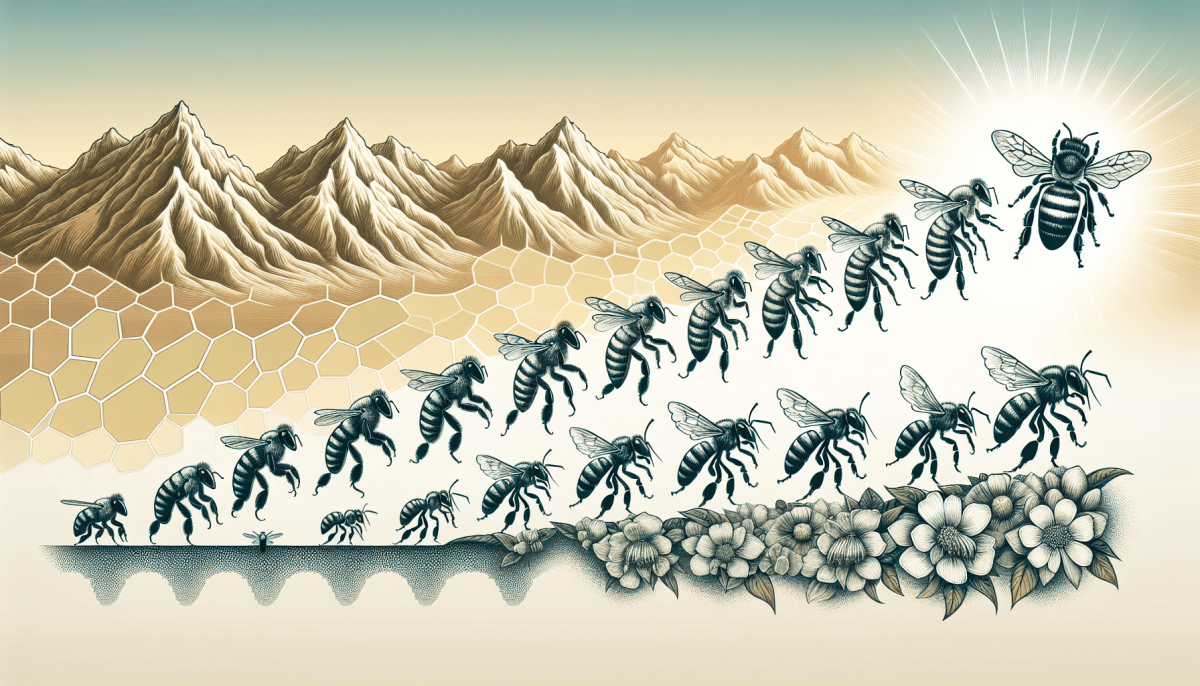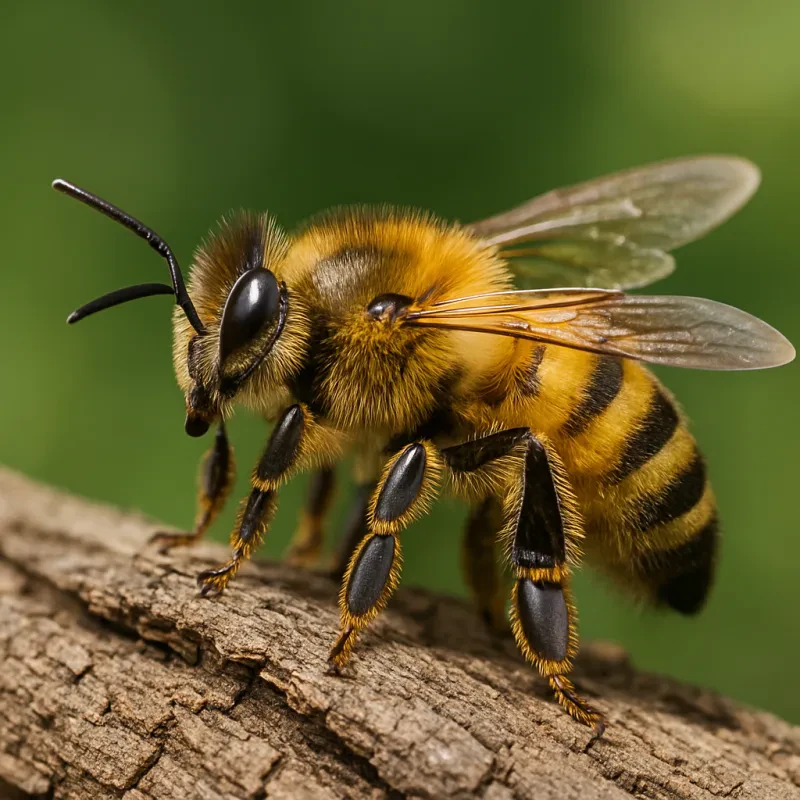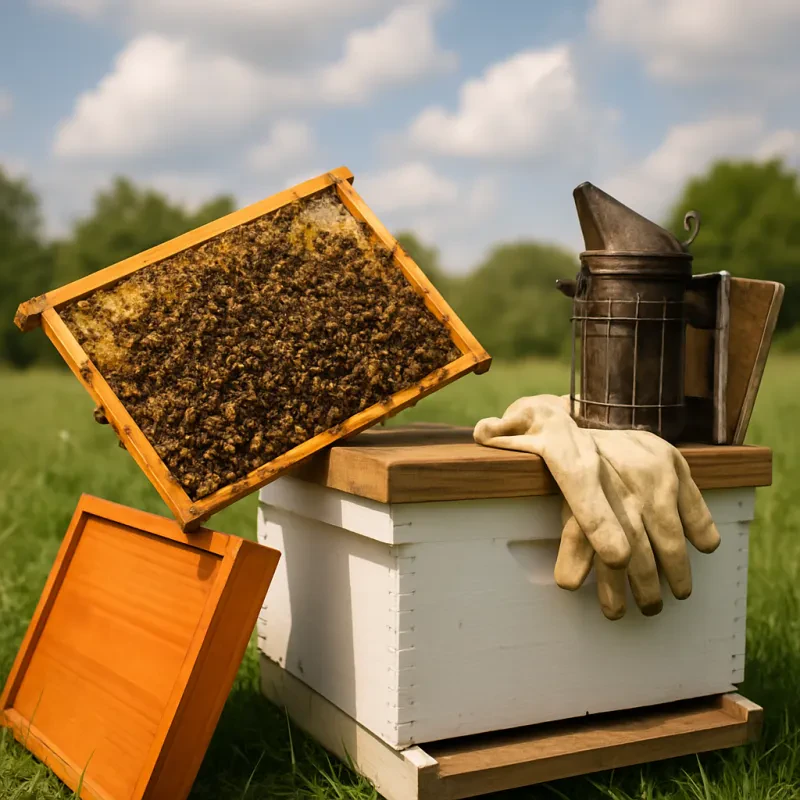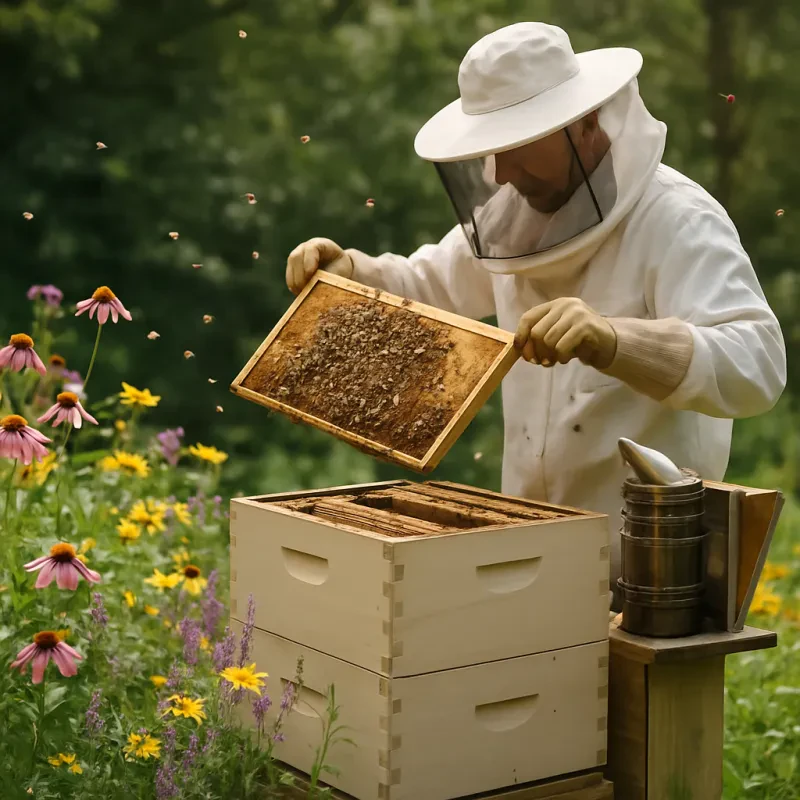The Saskatraz bee is a unique and resilient honeybee hybrid that has its roots in the cold climate of Canada. Developed in the late 1990s, this breed emerged from a collaboration between Canadian beekeepers and researchers who sought to create a bee that could thrive in harsh conditions while maintaining high productivity and excellent temperament. By carefully crossing various honeybee strains, notably the Italian bees and the Russian bees, the Saskatraz bee was born, combining traits such as disease resistance and gentleness with impressive honey production capabilities.
One of the primary goals in breeding the Saskatraz bee was to enhance its ability to withstand extreme weather and resist diseases, particularly Varroa mites, which have plagued honeybee populations globally. This careful selection process has paid off, as the Saskatraz bee demonstrates a natural resistance to these pests while also exhibiting a remarkable level of adaptability to varying environmental challenges. Beekeepers who manage these bees often report healthier colonies and a productive honey yield, making the Saskatraz bee a favored choice for both hobbyists and commercial operations alike.
Moreover, the breeding program for the Saskatraz bee emphasizes not only hardiness and disease resistance but also behavior. The Saskatraz bee is known for its gentle nature, allowing beekeepers to work with them more easily, diminishing the risk of stings during hive inspections. This calm demeanor, paired with their efficient foraging habits, makes them an ideal candidate for many beekeeping endeavors. As the interest in sustainable beekeeping practices grows, the Saskatraz bee continues to gain popularity, representing a successful blend of innovative breeding techniques and environmental resilience.
Key Traits of Saskatraz Bees
The Saskatraz bee is known for its remarkable adaptability and resilience. These bees were specifically bred in Saskatchewan, Canada, to thrive in various climates and conditions. One of their key traits is their ability to forage efficiently even in colder temperatures, which sets them apart from many other honeybee breeds. This adaptation allows them to gather food resources early in the spring and late into the fall, making them an excellent choice for beekeepers in cooler regions.
Another essential characteristic of the Saskatraz bee is its gentle temperament. Beekeepers often praise these bees for their calm nature, which makes them easier to manage and less likely to sting. This gentle behavior is particularly beneficial for novice beekeepers who may feel intimidated by more aggressive bee varieties. The Saskatraz bee strikes a balance between productivity and temperament, contributing to its growing popularity in apiaries worldwide.
Moreover, the Saskatraz bee is recognized for its impressive honey production capabilities. These bees are known to produce substantial amounts of honey while also exhibiting strong resistance to common hive pests and diseases. This resilience reduces the need for chemical treatments, making them a more environmentally friendly option for beekeeping. Many beekeepers appreciate how the Saskatraz bee not only supports healthy colonies but also contributes to sustainable beekeeping practices.
In addition to their productivity and docility, Saskatraz bees demonstrate excellent genetic diversity. This diversity allows them to adapt to various environmental pressures, including climate change. As beekeepers face new challenges, the traits found in Saskatraz bees become increasingly valuable. Their unique blend of adaptability and hardiness ensures that they can thrive even as conditions shift, making them a vital asset in the world of beekeeping.
Impact on Beekeeping Practices
The introduction of the Saskatraz bee has significantly influenced beekeeping practices across various regions. These bees are known for their hardiness and gentle nature, making them a favorite among both novice and experienced beekeepers. Their ability to thrive in diverse climates allows beekeepers to expand their operations into areas that might have been previously unsuitable for traditional bee species.
One of the most notable impacts of the Saskatraz bee is its remarkable resistance to diseases and pests, particularly Varroa mites. Beekeepers have found that incorporating this hardy strain into their hives reduces the need for chemical treatments, promoting a more sustainable approach to beekeeping. This not only benefits the bees’ health but also appeals to consumers who are increasingly seeking organic and eco-friendly products.
Moreover, the foraging behavior of the Saskatraz bee has led to increased honey yields. These bees are proficient at gathering nectar and pollen, which means beekeepers can enjoy larger harvests. This boost can be economically beneficial, enabling beekeepers to sell their honey at competitive prices in local markets and online. Additionally, the user-friendly management style required for Saskatraz bees allows beginners to gain confidence and succeed more readily in their beekeeping adventures.
Overall, the Saskatraz bee has reshaped the way beekeepers approach their practices. By emphasizing sustainability, reducing the reliance on chemicals, and enhancing honey production, these bees have become an important player in modern apiculture. As more beekeepers adopt this resilient bee strain, the positive effects on the environment and the economy continue to be felt.
Future of Saskatraz Bees
Advancements in breeding techniques also play a crucial role in the future of Saskatraz bees. Beekeepers are increasingly interested in selective breeding to enhance traits such as disease resistance and honey production. As more beekeepers adopt these practices, we may see an even stronger lineage of Saskatraz bees. Their hybrid vigor can offer solutions to some of the pressing issues faced by traditional bee species, which may struggle to cope with pathogens and pests.
Furthermore, community involvement is vital in shaping the future of Saskatraz bees. Educational programs aimed at raising awareness about the importance of bees and sustainable practices can lead to increased local support for beekeeping. Many agricultural communities recognize the role of Saskatraz bees in pollination and, by fostering a culture of appreciation for these remarkable insects, we can help secure their future on our farms and in our gardens.
Finally, the collaboration among researchers, beekeepers, and environmental organizations is essential for the long-term success of the Saskatraz bee. Sharing knowledge, resources, and innovative strategies can create a strong network dedicated to protecting this unique bee breed. As we look ahead, the concerted efforts of all stakeholders will be crucial in navigating the challenges facing our pollinators, ensuring that Saskatraz bees remain a vital part of our ecosystem.



